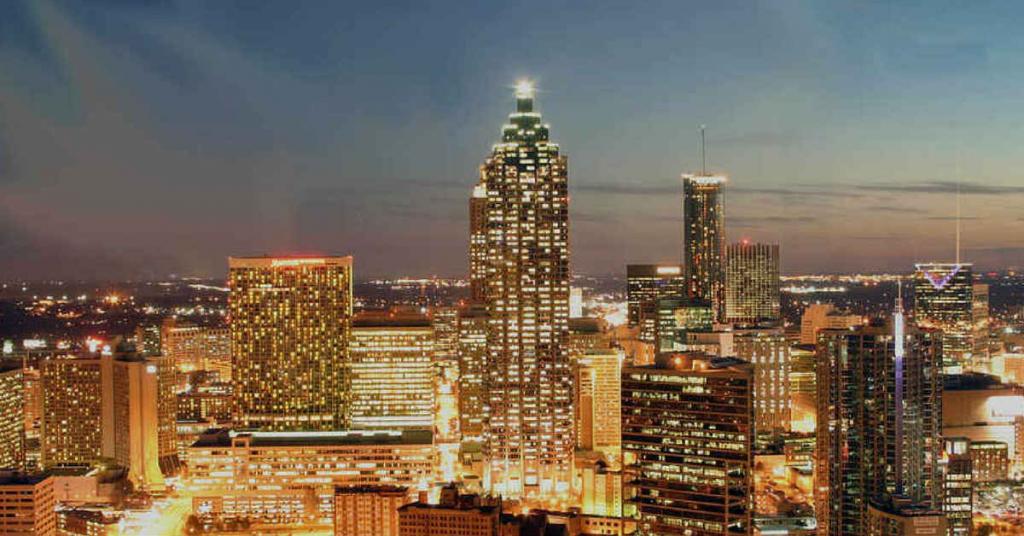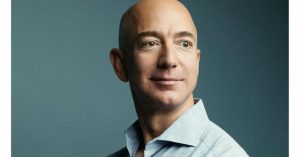Business
Why Amazon HQ2 Should Choose Atlanta
Published
7 years agoon
By
Ginny Nguyen
Amazon sparked a national contest with 238 proposals filling in for the role of Amazon HQ2. Recently, the list narrowed down to 20 notable cities as potential candidates. On the list, Atlanta Georgia offered a deal that may be difficult to refuse. From offering financial incentives to free land, there is great potential in occupying Amazon. Although that is a fact, there is an even bigger advantage for Amazon to move to Atlanta.
Amazon gave a promise to bring in 50,000 lucrative jobs and $5 billion in additional investments to the new location of HQ2. The impact of the tech innovative company will be net positive for Atlanta, Georgia. This includes fame and national respect to the region. The offer is appealing to Atlanta, however the city has prior recognition as they hosted the 1996 Olympics. Instead, Amazon may be the one getting the respect if they move to Georgia.
The Atlanta region is already attracting the tech company due to their professionalism. The city is business driven as copious Fortune 500 companies are within the Metro Atlanta area. This will foster Amazon’s wish for a stable and business-friendly environment. The community welcomes businesses in with their title for high degree of affordability and a healthy economy.
Amazon is in search for employment in software development and related fields. On the forefront of their talent search is Atlanta Georgia with the surrounding schools of Emory University, Georgia Institute of Technology, Clark Atlanta University, Spelman College, and Morehouse College. The appeal does not end there, Kasim Reed, the mayor of Atlanta is offering incentives and development that would be worth more than $1 billion. Moreover, the whole state of Georgia seems to be in support of occupying HQ2. Georgia is also uniquely presenting a branding opportunity to Amazon, with the town Stonecrest offering to rename itself as Amazon, Georgia. The small town outside of Georgia finalized the deal by granting legal power in the town of Stonecrest to Amazon CEO Jeff Bezo.

Image From Fortune
‘Think of Atlanta as a blank canvas, and every company that moves here has the opportunity to paint whatever picture they want which then becomes part of a tapestry that’s now making Atlanta an exciting place to live’, spoke Lilian M Raji from The Lilian Raji Agency.
The tech company will announce the winning city later in 2018. Meanwhile, proposals are still being presented to Amazon by representatives. As governors continue to voice their opinions, communities are silenced out by the public. Small businesses and agencies within Atlanta are able share their professional insight to Amazon. This is why Amazon HQ2 Should Choose Atlanta:
How will Amazon HQ2 affect the economy of the city?
“Amazon HQ2 will provide huge economic benefits to the city and state it ends up in, just as the headquarters in Seattle has served as a huge driver of their economic growth.
The benefits of Amazon opening HQ2 in Atlanta are projected to include:
• 50,000+ high paying jobs created
• Generating 5 Billion in real estate investment
• Increased funding for the educational system, including new schools
• Improvements in transportation links and transportation infrastructure
Additionally, Amazon’s presence would also help generate a lot of new supporting businesses. For Atlanta, this could help grow our business and tech community, which includes small businesses”. -Alex Membrillo of Cardinal Digital Marketing.
Amazon is searching for talent in software development and related fields. What is your city’s tech scene like?
“Atlanta has an awesome tech scene. Not only are we home to many tech-forward companies, but we offer a thriving environment for tech startups. Atlanta metro is home to a number of technology incubators and accelerates helping propel these companies’ success including Atlanta Tech Village and Advanced Technology Development Center (ATDC) at Georgia Tech.
Georgia can support the creation of new jobs, including for software development. We have top talent graduating from schools’ including Georgia Tech, University of Georgia, Emory, and Morehouse College. According to HiringSolved, in 2016 Georgia Tech ranked 6th in the U.S. for most alumni working at Silicon Valley companies, and we’d love to keep that talent in Georgia”. -Alex Membrillo of Cardinal Digital Marketing.
How will the community welcome Amazon HQ2?
“Atlanta’s #PrimeUpATL campaign is showing that Amazon HQ2 is getting a lot of support from Atlantans. People are excited to see the continued growth of our city in a variety of industries including film, automotive, and technology.
If Amazon HQ2 chooses Atlanta, I think they’d see an overwhelming amount of support from the entire state”. -Alex Membrillo of Cardinal Digital Marketing.
‘Atlanta is finally growing in a very good way. The city experienced a boom of transplants after the 96 Olympics. Lately, it’s been experiencing a boom of new companies and headquarters’, spoke CEO Lilian M Raji of The Lilian Raji Agency. The community have been kindly welcoming in new businesses ever since the famous notice and will continue to do the same for Amazon.

Image From Georgia Department of Economic Development
Do you support the major’s proposal? Why, or why not?
“Georgia has offered an aggressive package to encourage bringing Amazon HQ2 to Atlanta.
Our state’s Commissioner of Economic Development, Pat Wilson, has done an outstanding job of leading a unified effort, across the region, to attract Amazon. I completely support Atlanta’s bid for HQ2”. -Alex Membrillo of Cardinal Digital Marketing.
Besides financial incentives, what does your city offer?
“Atlanta offers a lot of things that make us a top contender for HQ2. In addition to our top-tier high educational institutions and job talent, we have nationally ranked schools, a business-friendly, tech-driven culture, and low cost of living.
Atlanta is also a transportation hub for the southeast. Three major Interstates cross through Atlanta, and we’re home to Hartsfield-Jackson Atlanta International Airport, the largest international airport in the world.
Many Fortune 500 companies already call metro Atlanta home. This includes The Home Depot, UPS, Coco-Cola, Delta Air Lines, Aflac, and Southern Company. Mercedes-Benz USA recently opened their new North American headquarters in metro Atlanta, which followed Porsche opening a headquarters in Atlanta in 2015. Georgia is also number 1 in feature film productions, with a film presence that is continuing to expand.
While we first made the international spotlight when we hosted the 1996 Olympics, our city is continuing to shine. In 2019 we’ll host the Super Bowl, and we are currently being considered by FIFA to host the 2026 World Cup”. -Alex Membrillo of Cardinal Digital Marketing.
‘Atlanta also has the busiest airport in the world, making executive travel here much easier. And while I have a lot of issues with Delta, Delta has proven to be the best domestic airline amongst the major players and it’s based in Atlanta!’ from CEO Lilian M Raji of The Lilian Raji Agency.

Image by Hartsfield-Jackson via ABC.
What is in your city that isn’t found anywhere else?
“Atlanta is an extremely unique place to live and work. We have a diverse population, including many transplants. As a southern city, we’re known for our friendly hospitality. Here we still wave to friends and strangers alike as they pass by. We also offer an extremely great place to live, which is important to businesses as employees must like where they live if you want to retain talent. People can find an area that fits their personality, such as the hipster vibe in Little Five Points, the small-town feel of Decatur, or the suburban areas in Alpharetta. If you want high-end luxury shopping or top notch dining, head to Buckhead.
Our residents are warm, just like the sunshine. Nicknamed, a “City in a Forest”, you can spend the days in the lush, green outdoors or out on the town. Atlanta has also revitalized areas for urban redevelopment. The Atlanta BeltLine, which has gained national attention, is comprised of 22 miles of unused railroad tracks circling the core of Atlanta’s intown neighborhoods. Other popular trail systems include Big Creek Greenway, which spans 20 miles, and The Silver Comet Trail, which runs 61.5 miles, ending on the Georgia/Alabama state line. All these projects have enhanced our connectively and communities.
To echo Migos’ sentiments, Amazonians can go from “Raindrop to Droptops” if Amazon chooses Atlanta”. -Alex Membrillo of Cardinal Digital Marketing.
‘Atlanta has SPACE. There is so much land available in the Atlanta area that a new company can design exactly the type of headquarter they want to build. As much as I love New York, New York can’t offer this’, says CEO Lilian M Raji of The Lilian Raji Agency.
If you are an agency from Atlanta, and wish to contribute, please fill out this form here: https://ownersmag.com/attention-marketing-pr-agencies-atlanta/
*Sponsored by Penji*
You may like
The Best Online Payroll Services [Updated for 2025]
Top 10 Small Business Organization Tools for 2025
8 Best Equipment for YouTube Every Content Creator Needs
Why Having an Advisory Board Could Make or Break Your Startup
Best Gift Guide for Men: Perfect Gifts for Every Occasion
What’s the Deal With Elomir? Is Axis Klarity a Scam?

A quality payroll service is one of the most invaluable tools any entrepreneur can have. Whether you’re a small business owner or an HR manager, paying your employees on time is crucial. This makes choosing a service even more weighty, after all, it is a heavy administrative burden. The good thing is, you can outsource this duty to an online payroll processor.
According to statistics, 49% of workers begin a new job search after just two paycheck errors, and with 65% of workers living paycheck to paycheck, it’s more important than ever to ensure an efficient, effective payroll process.
These services can save you precious time and mitigate potential issues. To make it easy for you to choose, we listed the best online payroll services for 2025.
Top 5 Online Payroll Services
Gusto
Gusto is a great option for both new and experienced payroll administrators, boasting an incredibly clean user interface and a first-rate payroll setup. Gusto lets you manage your employee’s time off (vacation and sick pay), company health insurance, and worker’s comp. Gusto offers excellent mobile access, too. This allows employees to manage aspects of their Gusto profiles, view payday insights, and access Gusto Wallet financial tools.
Gusto offers four tiers of membership, the most affordable of which is the Contractor’s Only plan, which offers unlimited U.S.-based and global contractor payments, supporting more than 100 countries, plus 1099 creation and filing at a rate of $6 per person per month with no base price.
The other three are Simple, Plus, and Premium. Here’s a deeper look into each plan:
Simple
Price:
$40/mo + $6/mo per person
Plan details:
- Full-service single-state payroll including W-2s and 1099s
- Employee profiles and self-service
- Basic hiring and onboarding tools
- Gusto-brokered health insurance administration
- Employee financial benefits
- Payroll and time-off reports
- Custom admin permissions
- Integrations for accounting, time tracking, expense management, and more
Plus
Price:
$80/mo + $12/mo per person
Plan details:
(All Simple plan features +)
- Full-service multi-state payroll including W-2s and 1099s
- Next-day direct deposit
- Advanced hiring and onboarding tools
- PTO management and policies
- Time tracking and project tracking
- Workforce costing and custom reports
- Team management tools
- Full support
Premium
Price:
Bespoke pricing, reach out for a personalized quote
Plan details:
(All Plus plan features +)
- HR Resource Center
- Compliance alerts
- Access to certified HR experts
- Full-service payroll migration and account setup
- Health insurance broker integration
- R&D tax credit discount
- Waived fees and exclusive pricing
- Performance reviews
- Employee surveys and insights
- Dedicated support
QuickBooks Online Payroll
Founded in 1983, Intuit is a California-based financial software company. Since its inception, Intuit has developed into one of the best-known providers of accounting software. Their online payroll service, QuickBooks, includes the essential features you need to run payroll.
QuickBooks offers three tiers of membership. The least expensive membership covers basic accounting features, such as invoices. For more features, check out the Essentials and Plus memberships. Each plan’s features are as follows:
QuickBooks Simple Start (2025)
- Price: $38/month for 1 user
- Best for: Freelancers and small teams with basic payroll needs
Features:
- Automated bookkeeping
- 5 free ACH bank transfers/mo for bills
QuickBooks Essentials (2025)
- Price: $75/month for 3 users
- Best for: Small businesses needing deeper financial tracking
Features:
- Includes all Simple Start features, plus:
- Recurring invoices
QuickBooks Plus (2025)
- Price: $115/month for 5 users
- Best for: Growing businesses with HR and compliance needs
Features:
- Includes all Essentials features, plus:
- AI-powered profit & loss insights
- Anomaly detection and resolution
- Budgeting
QuickBooks Advanced (2025)
- Price: $275/month for 25 users
- Best for: Established businesses with HR and compliance needs
Features:
- Includes all Plus features, plus:
- Custom user management and permissions
- Custom report builder
- Data sync with Excel
- Revenue recognition
- Forecasting
OnPay

OnPay is a cloud-based full-service payroll processing system capable of running payroll according to a preset schedule, automatically disbursing wages, and calculating and withholding taxes.
OnPay can sync up with several other software your team is already using, making it easy to integrate the service into your team’s system. Another benefit of OnPays model is the simple, transparent pricing structure. No tiers; just one base rate.
Pricing:
$49/mo + $6/mo per employee
SurePayroll

SurePayroll’s award-winning service supports W-2 employees and 1099 contractors. Additionally, it handles 401(k) deductions and manages flexible spending accounts (FSA) and health savings accounts (HSA).
SurePayroll also offers a mobile app— available on both Apple and Android devices.
SurePayroll offers live support through its United States-based support team through chat, email, or phone.
Small Business Payroll
- Price: No Tax Filing: $20/month + $4 per employee, Full Service: $29/month + $7 per employee
- Best for: Small businesses and startups
Features:
- We file and deposit your federal and state taxes!
- Run payroll in 3 simple steps
- Schedule payroll to run automatically
- Unlimited payroll runs and free 2-day direct deposit
- Reports and pay stubs are available online 24/7
- Supports W-2 employees and 1099 contractors
Nanny & Household Payroll
- Price: Full-Service Household, $39/month, includes 1 employee, $10 per additional employee
Best for: Homeowners
Features:
- Signature-ready Schedule H
- We file & deposit your federal and state taxes!
- Run payroll in 3 simple steps
- Schedule payroll to run automatically
- Unlimited payroll runs and free 2-day direct deposit
- Reports & paystubs available online 24/7
- Supports W-2 employees & 1099 contractors
Be sure to choose a payroll service that works for your business, and provides you with the peace of mind that comes with a reliable bookkeeping system. Your employees will thank you.

Surprisingly, MLMs have become one of the most lucrative scams in recent years. But to sum it all up, its structure is only beneficial for those at the top, as they are the ones making all the money. Meanwhile, the new recruits are at the bottom, waiting for scraps.
Although various efforts have been underway to expose these pyramid schemes, many people still fall for them. It seems that the trend has never really died down, as we often see a new trend of scrappy moms and fresh-outta-college girls going ga-ga over these weird products. One of the more controversial is Elomir’s Axis Klarity.
Before this was launched, many distributors posted videos and images of themselves with photoshopped Post-its on their tongues. And of course, they were passing it off as a real product. Soon enough, the hashtag #Changetheconversation was plastered all over social media.
So, what could have gone wrong? Let’s go over the story of Axis Klarity and its parent company, Elomir.
About Axis Klarity and Elomir

Axis Klarity is a product created by Elomir, making a buzz in 2022. It still exists today, but seems to be operating under the radar. That said, let’s get to know it better.
If you’re familiar with those Listerine strips that dissolve on your tongue, then you’ll find this product to be similar. Only, instead of making your breath smell minty fresh, Elomir claims that it’ll improve your mood, calm your mind, and increase your cognitive abilities. How does it do this, exactly? Who the f*ck knows? Their website doesn’t explain much.
It does offer a few testimonials, mostly from women who happen to be distributors. There is one testimonial from a 13-year-old girl, claiming that Axis Klarity had helped her in school.
There’s only one problem with that: on the bottom of their website, in tiny print, Elomir states that their flagship product is not intended for those under 18.
Strange. But I’m sure it’s nothing, right?
Red Flags… Red Flags Everywhere!

Now, here’s the deal with Axis Klarity; the ingredients are alarming.
Before Axis Kalrity’s launch date, people searched their website for an ingredient list. Here’s what’s in these “cure-all” yellow strips:
- Curcumin Conjugate
- NAC Conjugate
- Thiamine Conjugate
First off, there’s really nothing here that would cause a change in mood, clarity, or any other benefits listed by their distributors. But what’s even shadier is the ingredient “NAC Conjugate.” This is an antioxidant that should be inaccessible to the general public.
So how does Axis Kalrity, an unregulated supplement, include this ingredient? It seems that the FDA is pretty lax about NAC Conjugate, despite declaring that it is not a supplement. Unless a company is promoting their NAC Conjugate as a cure-all, they don’t have to worry about the FDA busting down their door.
Still, I personally wouldn’t take prescription drugs from an unregulated source (unless I’m trying to party).
Okay, so we now know the product is crap. But what about their business practices?
For the longest time, Axis Klarity was in this “pre-enrollment phase”. It’s basically like preordering a game on Origin, but surprisingly shadier. Because instead of preordering products, people were signing up as future sellers. Before making any actual sales, Elomir was already making millions off recruitments alone.
But that’s not all. When Elomir finally launched their knock-off dental strips, it was a MASSIVE flop. Hundreds of orders went unfulfilled, as the number of products they had in stock couldn’t cover the number of people buying them. Still, Elomir took the money from everyone who ordered, offering no refunds.
The company later claimed that this ordeal was due to machinery issues. But anyone with a brain could tell that they were simply unprepared.
Elomir continues to push forward, promoting Axis Klarity with flaky testimonials while their distributors and customers lack compensation for their orders.
Conclusion

It’s an MLM, through and through – ‘nuff said. If you’re thinking about buying Axis Klarity or becoming a seller, just… don’t. I recommend saving your time and money by purchasing some of those Listerine strips. You’ll actually get what you pay for.
Featured image from Elomir

How can you recession-proof your business?
This is a common question among business owners who are concerned about how well they will fare in an unpredictable economy.
Whether or not we’re officially in a recession, many companies are feeling the pressure—rising costs, shifting consumer habits, and ongoing market uncertainty. While no business is completely immune to downturns, there are practical strategies you can adopt to strengthen your resilience.
But what is a recession-proof company?
A recession-proof company is a business that can maintain stable revenue and demand even during economic downturns. These ventures typically offer products or services that consumers continue to need regardless of financial conditions.
In this guide, we’ll explore key ways to make your business more recession-proof and help you navigate today’s challenges with confidence.
Are We in a Recession?

The term “recession” often sparks panic, but its technical definition is more specific. A recession typically refers to two consecutive quarters of negative gross domestic product (GDP) growth.
As of 2025, many economies have shown signs of slowing down, like higher inflation, cautious consumer spending, and volatile markets. However, most experts agree we are not currently in a formal recession.
Key indicators, such as GDP growth, employment rates, and consumer demand, remain relatively stable in the U.S. and many parts of the world. Still, uncertainty looms due to persistent global conflicts, supply chain disruptions, and high borrowing costs.
Even if we’re not in a recession by definition, businesses are feeling the squeeze. That’s why preparing now and building a recession-proof business is crucial to staying strong through future economic shifts.
Will There Be a Recession?
Predicting a recession is tricky, and even seasoned economists debate its timing. While the economy may not be in a technical recession today, many experts warn that a downturn could still happen in the near future. High inflation, fluctuating interest rates, and global instability keep businesses on edge.
That’s why building a recession-proof business now is a smart move. Some industries can weather economic storms better than others. What business does well in a recession, and what sells best in a recession? If we look back at history, the ventures that thrived in the 2008 recession included:
- Discount retailers
- Repair services
- Healthcare
- Essential goods providers
These businesses focused on solving everyday problems and offering cost-effective solutions, something customers prioritize when money is tight.
On the flip side, the worst businesses to start during a recession are often those that rely on:
- Luxury spending
- Large capital investments
- Non-essential services (high-end travel, event planning, niche hobby stores, etc.)
These ventures typically struggle when consumers cut back on discretionary spending.
Even if the next recession doesn’t arrive tomorrow, building flexibility and resilience today will help you prepare for whatever comes next.
5 Ways to Recession-Proof Your Business
If you’re a business owner concerned about the economy, these 5 tips can help.
1. Find Low-Cost Solutions
Survive a recession by saving money. Brilliant, right? But this isn’t just about cutting temporary costs to weather the storm. To truly recession proof your business, you need to set up for the future.
Some businesses choose layoffs and department closures when times are tough, but this shouldn’t be your first resort. For starters, think about scaling back your operating costs. Consider migrating to cloud storage, or finding cheaper software alternatives.
For example, many businesses rely on freelancers to supplement their creative team, which can start to add up when you need a lot of designs.

You might find that you save money by switching to a subscription-based graphic design service like Penji. Check out our review to see why we recommend it. You can also sign up with our special 35% off promo code — PREP35.
2. Put People First
In a recession, you may have to scale down your business operations, and that can mean letting people go. But if you intend to survive the recession, mass layoffs may do you more harm than good.

A business is made up of people, and each worker plays a role in developing your brand’s unique personality. Layoffs can sour long-term relationships, but they can also change who your company is on a fundamental level.
In a recession, some downsizing might be inevitable. But to recession proof your business, aim for transparency. Talk to employees about your difficult decisions, let them know where you’re cutting costs and what prospects may look like down the road.
3. Rethink Your Architecture
Every application has an architecture. If you produce tech, you can recession-proof your business by rethinking how you deliver it.
For example, you may consider a microservices architecture, which is sometimes less expensive than a singular (“monolithic”) setup. This considers each element of your service as its own mini-service.
For instance, an ecommerce site might use different services for accessing a user’s account, their shopping cart, and processing their payment. The user still sees one website, but under the hood, they’re accessing different services.
4. Demonstrate Your Value
Chances are, you’ve already given a lot of thought to what, exactly, your business offers. It should be at the core of all your marketing materials, your whole brand strategy.

But to recession-proof your business, you’ll need to double down. It’s not just, “What can we do for you?” It’s, “Why do you need us?”
Some of the best ways to demonstrate your business’ value include:
- Money saved
- Life improved
- Everyday problems solved
- What sets you apart from competitors
5. Be Flexible
On the one hand, you want to hold onto your business fundamentals to survive a recession. Your people, your values, your product. But when something needs to change, you can’t afford to be too precious about your current processes.

Be willing to make changes, but make informed ones. Test out new messaging, new products, new pricing models. If your ads are losing ROI, it might just be a sign of the times, but it’s worth looking into different strategies that could give you a boost.
You might think that in order to recession-proof your business, you need to avoid showing signs of weakness. The fact is, the most stubborn businesses are often the first to go.
Markets change a lot during a recession. When you come out the other side, you want to be ready to meet whatever new challenges come your way.
The Lowdown
Learning how to recession-proof your business isn’t about avoiding risk but creating stability in an unstable economy.
While you can’t control the economy, you can control how you prepare. Focus on cutting unnecessary costs without sacrificing your team, demonstrate clear value to your customers, and stay flexible with your strategies.
Businesses that survived the 2008 recession didn’t just hold on; they evolved. The best way forward? Start building resilience now so your business can thrive, no matter what the market throws your way.

The Best Online Payroll Services [Updated for 2025]

Top 10 Small Business Organization Tools for 2025

8 Best Equipment for YouTube Every Content Creator Needs

Why Having an Advisory Board Could Make or Break Your Startup

Best Gift Guide for Men: Perfect Gifts for Every Occasion

What’s the Deal With Elomir? Is Axis Klarity a Scam?

The Best Ways to Recession Proof Your Business

What’s the Deal With Elomir? Is Axis Klarity a Scam?

Why Having an Advisory Board Could Make or Break Your Startup

Loom Review: Features, Use Cases, and How It Stacks Up Against Zoom

8 Best Equipment for YouTube Every Content Creator Needs

The Best Ways to Recession Proof Your Business

Top 10 Small Business Organization Tools for 2025








